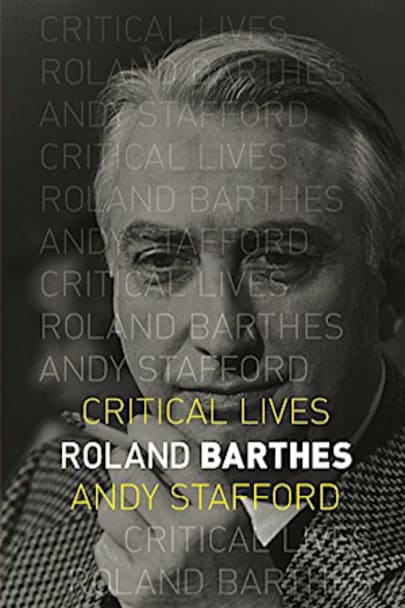In this cogent, accessible biography, Andy Stafford offers a new picture of the man and his work, one that helps us to understand him even as it acknowledges the complexity presented by his restless interests and unorthodox career. Stafford argues that Barthes is best classified as a journalist, essayist, and critic, and he emphasizes the social preoccupations in his work–how Barthes … work–how Barthes continually worked to analyze the self and society, as well as the self in society. In doing so, Stafford paints a fascinating picture not just of Barthes, but of the entire intellectual scene of postwar France. As Barthes continues to find new readers today, this book will make the perfect introduction, even as it offers new avenues of thought for specialists.
more



A book all storytellers should know about is S/Z by Roland Barthes from 1970 because in it Barthes breaks down a story by Balzac titled “Sarrasine” which is about the narrator’s encounter with a retired legend of Italian opera named Sarrasine who happens to be one of the rarest of the rare opera singers, one who was purposely castrated prior to puberty in order to preserve a quality in the human voice obtainable in no other manner. In other words, it is a cross between a male voice and a female voice. But Barthes book is really not about that — or maybe it is. What Barthes does is point out something storytellers have always done when writing a story. It turns out that, when writing a story, a storyteller is using only five types of statements and repeating them in a slightly different order in each paragraph. Here are the five types: hermaneutic, proairetic, semic, symbolic and cultural. Meaning that some statements are there to develop the mysteries of the text, some are for narrative drive, some are for magnification of the mysteries and narrative drive or to enhance their resonance, some are to develop the symbolic patterns of the text, and some are there to point out the foundation of shared cultural knowledge underlying the story. Barthes also provides a 10-point breakdown of a universal plot shape that considers all stories to be grappling with an enigma. These 10 points are: Thematisation. What in the narrative is an enigma? Positioning. Additional confirmations of the enigma.
Formulation of the enigma. Promise of an answer of the enigma. Fraud. Circumvention of the true answer. Equivocation. Mixture of fraud and truth.
Blocking. The enigma cannot be solved. Suspended answer. Stopping the answering after having begun. Partial answer. Some facets of the truth are revealed. Disclosure of the truth. When compared to another 10 step story shape called The Hero’s Journey, we start to see a common structure. These 10 points are A Call to Adventure. An Initial Refusal. Encouragement by a Mentor. Crossing the 1st Threshold. Encountering Tests, Allies and Enemies. Enduring the Supreme Ordeal. Entering the Inmost Cave. Crossing the 2nd Threshold. Obtaining the Elixir. Escaping Pursuers On The Road Home and Sharing The Elixir With the Community. This supports what Diane Johnson says in her essay The Importance of Plot about there being only three plot shapes: a quest, a mystery or a quest to solve a mystery. In other words, there appears to be a common shape to the human story that a number of theorists have each managed to discover even though they were each coming at it from a different angle. That must mean we’re all on the same quest and even the steps in the quest must be the same or similar.